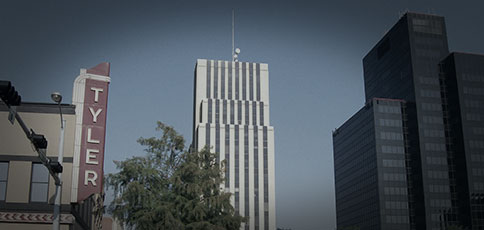
The kinds of video footage you can legally use as evidence in Texas come from:
- Traffic cameras
- Business or residential surveillance cameras
- Dash cameras
If your lawyer can authenticate the video, cell phone footage may also be permissible in your case.
Video recordings of an accident can be influential in a personal injury case, as they can verify your account of the accident. Evidence such as video footage is often crucial to proving fault in a personal injury case.
How Would Someone Obtain Video Footage After an Accident?
Our clients and prospective clients have many questions after their accidents. As you read, know that you can call our firm at any time for answers to your case-related questions.
Law enforcement officials and private investigators may request available video footage during an accident investigation. Your accident attorney from our firm will also seek any video recordings showing your accident.
In many cases, businesses, individuals, and public entities are willing to provide investigators with video footage. In fact, the Texas Department of Transportation makes a list of all its traffic cameras (potential sources of key video evidence) available online.
Even if parties with useful video evidence will not cooperate, your accident lawyers can use a subpoena to potentially obtain video footage. A subpoena is a legal document that orders an entity to provide requested materials connected to a legal case. Such materials can include traffic camera video and other types of video relevant to your case.

800-285-HURT (4878)Available 24/7 | 356 Days | se habla español
Where Can You Find Useful Video Evidence After a Traffic Accident?
You can find video footage even in places that you might not expect. For instance, you might find relevant footage:
- At schools, which may have cameras mounted to the building, on poles near the school, and on buses
- In law enforcement offices, which may maintain footage from officers’ dash cameras and body cameras
- At private businesses, which may offer footage from security cameras
- On witnesses’ cell phones
- On social media accounts
- In local municipal buildings, which may store footage from red light cameras
Your lawyer will scour the area where your accident happened, taking note of all cameras that could have captured your collision.
Let an Attorney Find Video Evidence for You
Your focus should be on your recovery after a traffic accident. A lawyer from our firm will seek video footage on your behalf, allowing you to prioritize your health.
We understand common sources of useful video recordings and how to obtain the recordings from those sources. Let us use our team of investigators, experience, and financial resources on your behalf.
Why Is Video Evidence Permitted in a Personal Injury Case?
Video evidence is often allowed in a Texas personal injury case to show how an accident happened. Such footage can show who was at fault for an accident. This is important because you must generally show another driver’s negligence before receiving compensation for your damages.
Video footage may show:
- Whether a driver was speeding or committed a traffic violation
- What the weather conditions were at the time of the accident
- Whether there were other contributing factors to the accident
- How each party involved reacted to the accident
- Actions either motorist took (or did not take) to avoid the collision
- Actions each party took following the accident
In some cases, the other party may argue that you bear some responsibility for causing the accident that led to your injuries. Under Texas law, you cannot recover any compensation for your injuries if you are more than 50% at fault for the collision. Video footage can help prove that you were not primarily at fault for your accident.
Which Parties Can Use Video Footage in a Personal Injury Case?
You can use video footage to strengthen or support your claim for compensation after suffering injuries in an accident. When it is available, video footage can be a substantial piece of evidence in your case. So long as they acquire it legally, your attorney can submit the video as evidence.

800-285-HURT (4878)Available 24/7 | 356 Days | se habla español
What Are the Limitations of Video Footage as Evidence in Personal Injury Cases?
Despite their potential benefits, video footage is not always useful as evidence in a personal injury case. Video footage typically provides only one angle of an accident. Witnesses may have been in a better position than a camera to capture how the accident happened.
Multiple witness statements can offer a variety of points of view on an accident. A video camera pointed only in a single direction might have a more limited scope.
Remember that the other party can collect video footage to refute your case. Video footage might tell a different story than the one you told. However, so long as you are honest about your account of the accident, video recordings should affirm your retelling of events.
An insurance company also may use unrelated videos to undermine your personal injury claim. For instance, posting a video of yourself running after you have claimed injuries could harm your case. However, such videos may lack context, and our firm will explain or refute any video evidence used against you.
Call Loncar Lyon Jenkins Today to Seek Video Footage and Fight for Your Financial Recovery
Video is one of many types of evidence our lawyers will seek for your traffic case in Texas. The lawyers and staff of Loncar Lyon Jenkins will fully investigate your accident and damages.
You can start working toward getting compensation for your injuries in an accident by calling our law firm immediately. We offer free consultations. Call Loncar Lyon Jenkins today for your free consultation.

